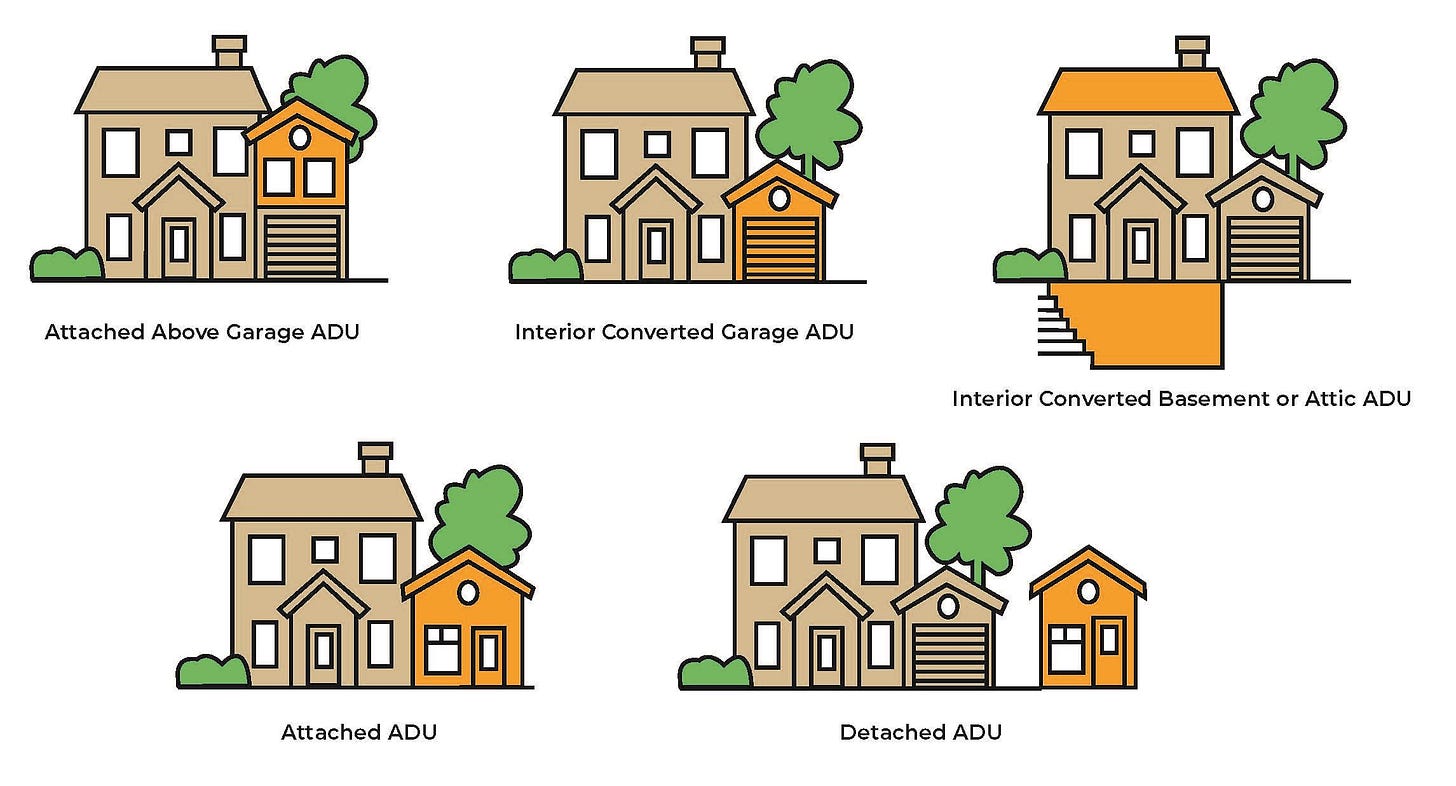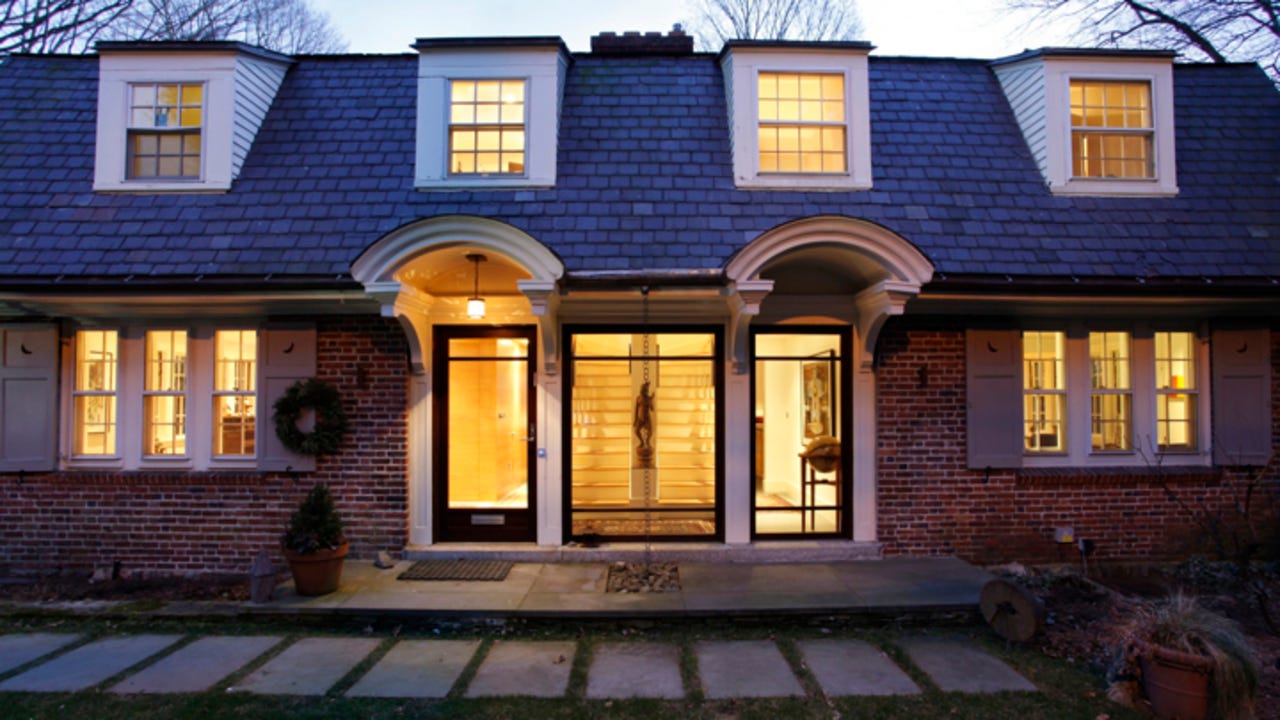How to Make Housing Affordable: Part 4
Unlocking the Potential of Multi-Generational Housing: A Path to Middle-Income Homeownership
As housing costs continue to squeeze middle-income families across the country, innovative solutions are emerging that address both affordability and changing family dynamics. Multi-generational housing—particularly the conversion of existing homes into dual-unit properties—presents a compelling opportunity to expand homeownership while strengthening family bonds and financial security.
The Perfect Storm: Market trends and national demographics collide.
The convergence of several trends makes multi-generational housing increasingly attractive.
Housing prices have outpaced income growth in many of the most desirable school districts. The result is that traditional homeownership in those neighborhoods is no longer within reach for middle-income families. And yet, there are treasure troves of data that illustrate giving children access to top performing schools is one of the leading indicators of long-term economic success.
Simultaneously, an aging population of empty nesters sits on significant home equity in large suburban properties, often in the very neighborhoods where their adult children want to raise families but cannot afford to buy. Empty nesters can’t afford to downsize, and young families can’t afford to buy their way into these neighborhoods on their own.
This creates a unique opportunity: transforming oversized suburban homes into thoughtfully designed dual-unit properties that serve multiple generations while maintaining privacy and independence for all residents.
The Conversion Advantage
Converting existing homes offers distinct advantages over building new multi-generational housing from scratch. These properties often feature:
Established Infrastructure: Existing homes in mature neighborhoods already have essential utilities, established landscaping, and proven structural integrity. The foundation for expansion is literally already in place. This means the cost of the underlying land, utilities, etc doesn’t need to be factored in in many cases.
Prime Locations: Many suburban homes sit on larger lots in desirable school districts—exactly where younger families want to live but often cannot afford. Converting these properties unlocks access to these coveted areas.
Cost-Effective Expansion: Adding a second kitchen and exterior entrance typically costs significantly less than purchasing a second home in the same neighborhood or building something brand new on vacant land. This approach leverages existing square footage while creating genuine independence.
Flexible Design Options: Larger suburban homes often have layouts that naturally accommodate conversion, whether through basement finishing, garage conversion, or the addition of in-law suites.
Key Zoning Reforms for Success
For multi-generational housing to flourish, local zoning codes must evolve beyond traditional single-family restrictions. Several critical reforms can unlock this potential:
Accessory Dwelling Unit (ADU) Provisions: Zoning codes should explicitly allow for secondary units within existing single-family homes, including provisions for separate entrances, kitchens, and utility connections. Be sparing with any limitations like maximum unit sizes. Some families will want to divide their spaces 50/50. Others may want to set aside more square footage for one group or the other.
Parking Flexibility: Traditional parking requirements often assume each unit needs two parking spaces. Flexible standards that consider shared family vehicle use and proximity to transit can make conversions more feasible.
Setback and Lot Coverage Adjustments: Allowing modest increases in lot coverage for essential additions like entrances, covered walkways, or small extensions can make conversions practical without compromising neighborhood character.
Utility Connection Permissions: Codes should clearly permit separate utility meters for converted units, allowing for independent billing and management while maintaining the property's residential character.
Design Standards That Preserve Character: Rather than prohibiting conversions, codes should establish design guidelines that ensure modifications complement existing neighborhood aesthetics.
A single family home with two front doors. Three generations share some common spaces but can also maintain their privacy.
Building Community Support
Successfully implementing multi-generational housing requires community buy-in. Emphasizing benefits to the broader neighborhood can help build support:
Neighborhood Stability: Multi-generational arrangements often create more stable, long-term residents who are invested in community wellbeing. In many places, it also brings much needed young people to repopulate school districts.
Efficient Land Use: Converting existing homes maximizes the utility of developed land without requiring new infrastructure.
Economic Benefits: These arrangements can help maintain property values while making neighborhoods accessible to a broader range of incomes.
Social Cohesion: Multi-generational housing can strengthen community ties and provide built-in support networks for families.
The Path Forward
Multi-generational housing represents more than just a housing solution—it's a return to historical patterns of family living adapted for modern needs. By thoughtfully converting existing suburban homes and creating supportive zoning frameworks, communities can expand housing opportunities while strengthening family bonds and economic security.
Many homeowners are surprised to discover that they aren’t allowed to pull a building permit to add a kitchen in a basement conversation without getting a special land use or variance from their zoning board. We should simplify these processes to the greatest extent possible in as many places as possible.
The key to success lies in balancing independence with togetherness, ensuring that regulatory frameworks support rather than hinder these arrangements, and creating legal structures that protect all parties while maximizing the benefits of shared ownership.
As housing affordability continues to challenge middle-income families, multi-generational housing offers a practical, relationship-strengthening solution that leverages existing resources while creating new opportunities for homeownership and wealth building.



